It is a fact that literally millions of people around the world claim to have seen a UFO at one time or another, and many thousands of reports have been officially filed going all the way back to World War Two. However, investigation into just what these objects may have been have pretty conclusively demonstrated the vast majority of these reports have prosaic explanations such as hoaxes, hysteria, or misidentified natural or man-made objects, much to the chagrin of the UFO community. While many dismiss such explanations as simplistic attempts to skirt the issue or, worse, a carefully contrived and orchestrated effort at debunking the entire phenomena, the fact is that many, if not most, UFOs can usually be explained away. As such, it’s important we examine each of the many explanations offered, if only in an effort to better appreciate the difficulties investigators frequently face when looking at the phenomena from a scientific perspective, compelling me to create my list—in no particular order—of the top ten alternative explanations usually given to explain UFOs.
10. The Planet Venus

It’s no coincidence that UFO reports go up sharply whenever Venus makes an especially bright appearance in the night sky, so this explanation is not as far-fetched as it seems. Under the proper conditions, Venus can be among the brightest objects in the sky—particularly on a moonless night—and has even been known to be visible in the daytime under the proper conditions, making it a frequent explanation for many a mysterious “bright light in the sky.” For those already predisposed towards accepting any unusual light in the sky as a potential close encounter, Venus makes an excellent candidate for being a UFO—especially when it is seen low on the horizon from a moving automobile (when it can appear to be “chasing them”), or on a partly cloudy night when it will seem to abruptly appear and disappear as fast-moving clouds obscure it from view. Additionally, it can be extremely difficult to convince people that the bright light in the sky they saw was merely sunlight reflecting off a nearby planet, largely because of the natural human reluctance to admit error as well as the trauma such an experience can sometimes induce.
9. Meteors, Comets, and Fireballs

This is a less common explanation, since most people are familiar with meteors (or “shooting stars” as they are commonly called) and so are unlikely to mistake one for a UFO. Comets are even less likely to be mistaken for a UFO, especially since they remain fixed in the sky, can be seen for weeks at a time, and are usually not particularly bright in the first place. A fireball, however—basically a large, brightly lit meteor observed at close range—is a better candidate, as they can be very bright, last several seconds, appear to split into smaller pieces, and even abruptly disappear from sight as if “zooming away at great speed” as many UFO witnesses describe. When seen head-on, a fireball can be particularly impressive, as it would appear to be an extremely bright and slow-moving object that suddenly vanishes from view, much like a UFO frequently does. Such astronomical phenomena are not, however, adequate explanations for an object that makes abrupt course changes in mid-flight, changes color (or shows multiple colors) or that lasts more than a few seconds, and as such they probably constitute only a very tiny fraction of all UFO reports.
8. Lenticular Clouds
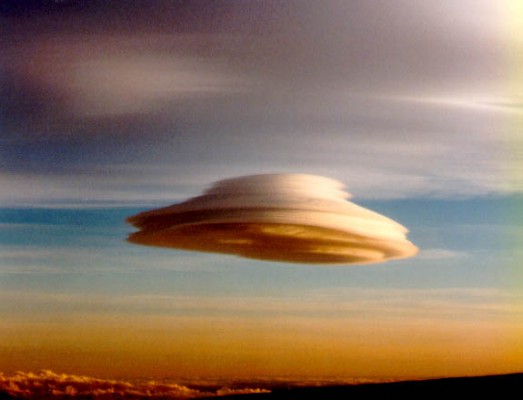
Technically known as altocumulus standing lenticularis, lenticular clouds are stationary lens-shaped clouds that form at high altitudes, normally where stable moist air flows over a mountain or a range of mountains. Normally these air currents form long strings of clouds known as a wave cloud, but sometimes, under the right conditions of wind and thermal currents, they can take on a roundish or oval shape that can be extraordinarily unnatural and even “saucer-like” in appearance, which in turn can be confused for an extremely large disk by people unfamiliar with such meteorological phenomenon. Only those entirely unfamiliar with this phenomenon are likely to be fooled by a lenticular cloud, however, especially once they observe one for a while and realize it is not moving or that it doesn’t appear to be mechanical in nature. Still, for the unaware, it can be a strange sight and one that might be easily confused for something otherworldly.
7. Ball Lightning
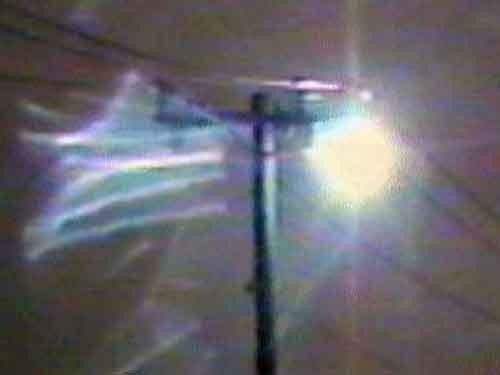
Among the more unusual and lesser understood electrical curiosities known to science is something called “ball lighting”, a phenomenon that has only been identified within the last fifty years or so. Basically, ball lightning is a sphere of static electricity that has the ability to glow intensely for several minutes at a time and, when seen in broad daylight, can even take on a fluid silvery-like sheen that can be easily mistaken for metal, giving them a “disk-like” appearance. Additionally, though usually seen to move randomly, sometimes the discharge is described as being attracted to a certain object—normally an aircraft—giving these orbs the appearance of “following” a plane and even matching it in terms of speed and maneuvers, thereby giving it the impression of being under intelligent control. Commonly described as spherical, ovoid, teardrop, or rod-like in shape, and with colors that vary from red to yellow (though other colors have been observed) it’s not difficult to see how they could easily be mistaken for an unnatural object, especially after it disperses, is absorbed into something, or—though rarely—vanishes in an explosion. As such, ball lightning appears to be a perfectly adequate explanation for some of the more erratic lights seen in the sky—particularly those observed from aircraft.
6. Weather Balloons
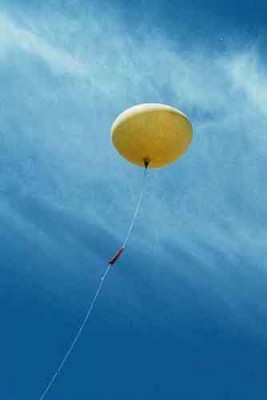
Though frequently lampooned as the most simplistic of explanations for UFOs, the fact is that helium filled weather balloons make excellent UFOs, especially when seen from below when their spherical shape can appear disk-like. Further, these balloons can be quite large, are often coated in a highly reflective material (giving them a polished or shiny appearance), and can fly at altitudes as high as 120,000 feet where winds aloft can sometimes push them along at hundreds of knots, giving them the illusion of moving at high speeds. Furthermore, when seen moving through a partly cloudy sky when winds can blow in different directions at different altitudes, sometimes pushing clouds in one direction and a balloon in the opposite, the illusion of high speed is enhanced.
5. Satellites
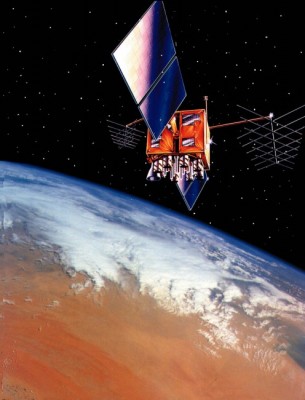
As the demand for improved communications, weather forecasting and aerial surveillance grows, the orbital lanes around our planet are growing increasingly cluttered with a wide array of fast moving and highly reflective satellites of all sizes and configurations. To give you some idea of how cluttered our skies are getting, the United States Space Surveillance Network (SSN) currently tracks more than 8,000 man-made objects orbiting the planet, of which about seven percent (approximately 560) are operational satellites. Often trapped in their orbits for years at a time, these silent sentinels of the skies can usually be picked out by anyone with a pair of binoculars and some patience, so they are not an uncommon sight. However, as they can often appear to pulsate in intensity (a natural illusion created by atmospheric inversion layers) and even “wink out” when their angle to the sun changes, they doubtlessly account for at least some of the many thousands of UFO sightings made over the years.
4. Flares
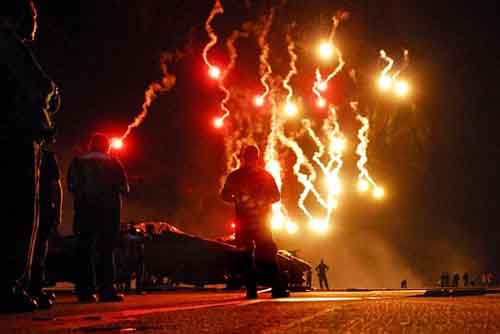
Military aircraft often drop flares while conducting night training operations (or, in combat areas, as a means of diverting heat-seeking anti-aircraft missiles). These flares, unlike the tiny ones used to mark highway obstacles or for emergency use, are quite large and will burn brightly for up to a half an hour at a time and, when suspended from parachutes, can remain airborne for some time. As such, if dropped in a cluster, they can take on a beaded necklace effect that gives them the impression of either aircraft hovering in formation or, if close enough together, can even appear to be a string of running lights or “portholes”. To a public generally unfamiliar with such ordnance and its characteristics, the effect can be spectacular and even frightening, making flares an especially good candidate to be mistaken for a UFO. This, in fact, may be the explanation behind the mysterious lights that were seen hanging over Phoenix, Arizona in 1997 (which does, in fact, lie near a military training ground where evening bombing exercises are frequently held.)
3. Birds, Lens Flare, Reflections, and Other Abnormalities
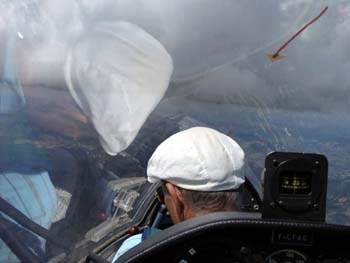
Few people can accept the possibility that something as seemingly commonplace as a bird could be mistaken for a UFO, but it must be realized that under certain circumstances—for example, when flying at very high altitudes (some birds have been spotted flying as high as 40,000 feet or more)—birds can be highly reflective and, when wet, even appear to glisten like metal, giving them an “artificial” or metallic appearance. Additionally, bits of tin foil or panels of corrugated metal driven skyward by high winds and strong updrafts, falling chunks of ice broken off from a high altitude airliner, and other bits of aerial flotsam can also take on a silvery sheen and appear quite luminescent, making them occasional candidates for flying disks. Even cockpit lights reflecting off a canopy have been misidentified as high-speed UFOs (especially in the early years of UFO pursuits).
2. Aircraft
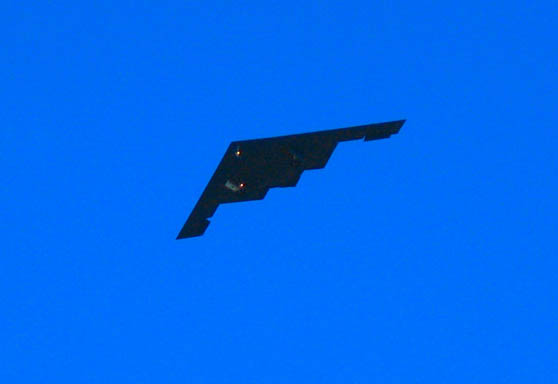
While it is difficult to imagine that anyone could mistake a modern airliner or military jet for an extraterrestrial vehicle, there are circumstances when an aircraft can appear quite unusual, particularly to a highly excitable observer. For example, anyone who has ever seen a jet’s landing lights diffused by thick fog (or suddenly turned off during a steep ascent, making the aircraft appear to abruptly vanish) could easily imagine they are witnessing something otherworldly. Additionally, an aircraft flying through thick clouds on a dark and windy night (when the sound of engines is often masked) could easily appear as a mysterious, bright object winking on and off and changing brightness as it moves silently through the darkness. It can be problematic to identify a mysterious object in the sky as an aircraft during the daytime as well. For example, the brushed aluminum fuselage and wings of an aircraft can give off an eerie sheen at high altitudes on a bright and sunny day. This characteristic, when combined with the fact that most aircraft’s navigation lights are invisible in daytime and engine noise is often indiscernible from that height, can make it appear to be a mysterious, silvery object moving swiftly across the sky. Also, if seen straight on, an aircraft can appear to be hanging motionless, at least until it makes a sudden turn, thereby mimicking the sudden stops and start movement often associated with UFOs and further enhancing its otherworldly effect.
While a fixed wing aircraft are less likely to be misinterpreted as a UFO by a growingly savvy flying public today, they were undoubtedly the cause of many early UFO reports when aircraft were less common and, as such, more “unusual”. Blimps, helicopters, and VTOL aircraft (fixed wing planes capable of hovering) are also frequently mistaken as UFOs due to their unconventional flight characteristics—in particular their ability to hover and then suddenly fly away. Normally, one has only to watch these vehicles for a few minutes to ascertain their true identity but the highly excitable witness may never take those few minutes before deciding they are seeing an alien spacecraft.
1. Experimental Military Aircraft
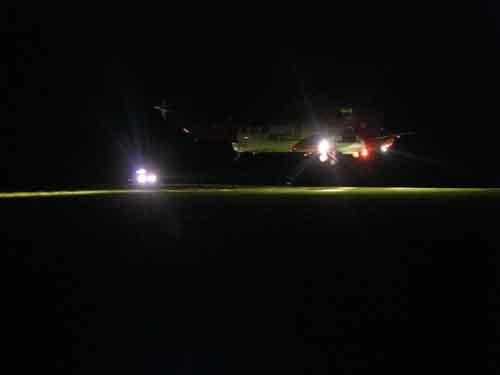
If regular aircraft can be a source for confusion, it makes sense that unusual looking experimental aircraft should be even more prone to being misidentified as a UFO, especially considering the vast array of often unusual or, at very least, unconventional designs being introduced. In fact, this hypothesis was very popular during the early years of ufology, when it was widely assumed—even by our own government—that the strange vehicles seen in the skies were either test-flights of captured Nazi aircraft or new and exotic Soviet vehicles capable of penetrating our airspace with impunity. In fact, the Air Force’s first official attempt to investigate UFOs—Project Sign—worked from the premise that UFOs were such weapons, thus necessitating both the urgency and the secrecy under which Sign operated.
However, considering how rare such craft are, the fact that they are usually flown only over restricted areas well away from public viewing, and that their flight characteristics are not usually all that far removed from traditional aircraft, it’s difficult to see how these would account for more than a tiny percentage of all reports. As such, it’s a near certainty that the unusual craft you see doing right angle turns, darting at incredible speeds across the sky, and changing color and intensity is not one of ours (or anyone else’s, for that matter).
source: http://www.toptenz.net/top-10-common-explanations-for-ufos.php
